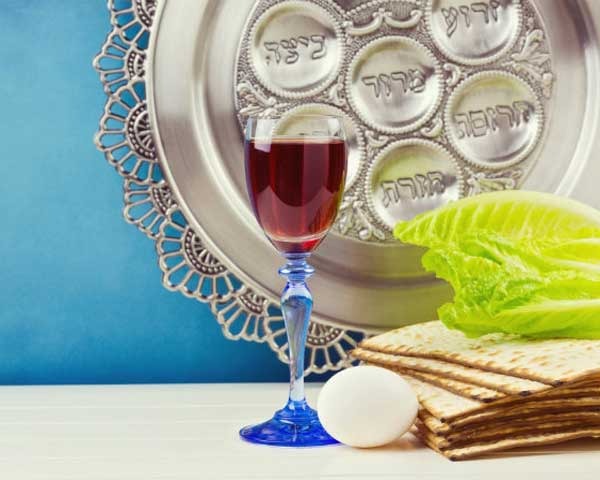What Is A Passover Seder?
As the Jewish holiday of Passover approaches, matzah and Manischewitz are on the shelves at grocery stores, jelly candies are in the seasonal aisle, and kosher seltzer bottles with yellow Hebrew-inscribed caps crowd the shelves. For millions of Jews around the world, it's time to say goodbye to fluffy white bread and other leavened treats, and hello to dry crunchy matzah, for eight days beginning the evening of April 14.
Click here for the What Is a Passover Seder? (Slideshow)
The weeklong holiday begins with a Seder, a fifteen-part ritual meal, on the first night of Passover. In Hebrew, "Seder" means "order," referring to the parts of the ritual leading up to the Passover dinner. A Seder is not your typical family sit-down dinner — food is an important symbolic element used to tell the story of the Exodus from Egypt through the Haggadah, "the telling."
The meal revolves around the telling of the familiar story of the Exodus: According to the Hebrew Bible, after living peacefully in Egypt, Israelites began to be feared, resulting in their persecution, enslavement, and the drowning of their firstborn sons. After fleeing into the Sinai desert, Moses, an infant rescued by the pharaoh's daughter and adopted into the royal family, returned to Egypt to free his kin by God's command. Pharaoh rejected Moses' pleas to free the Israelites, so God unleashed 10 plagues on the Egyptians, including the slaying of their firstborn sons. The Israelites were told to mark their doorframes with lamb's blood, and the plague would "pass over" their homes. Finally, Moses led the Israelites out of Egypt, but Pharaoh sent soldiers after them. God parted the Red Sea, allowing the Israelites to cross before closing the waters and drowning the soldiers — a miracle, bringing them closer to their ancestral home in Canaan, the Land of Israel.
One of the most widely known practices of Passover is the removal and abstaining of all leavened foods. As the story goes, in their rush to escape Egypt, the Israelites were unable to allow their bread to rise, resulting in unleavened flat breads similar to matzah.
Each table has a Seder plate, containing items symbolic of the Jews' enslavement and exodus:
Bitter herbs (maror): Symbolizes the bitterness and harshness of slavery. Usually it's parsley, celery leaves, romaine lettuce, or horseradish.
Charoset: A tasty mixture of chopped nuts (usually walnuts), grated apples, cinnamon, and Manischewitz, meant to symbolize mortar used to build the storehouses and pyramids of Egypt.
Karpas: Usually celery or parsley (if not used as the bitter herb), to be dipped into salt water (which symbolizes tears) at the beginning of the meal.
Z'roa: Traditionally a roasted lamb shankbone, meant to symbolize the Paschal lamb sacrificed at the Temple in Jerusalem. Can also be substituted by a chicken wing or chicken neck.
Egg (Beitzah): A roasted hard-boiled egg, symbolizing mourning over the destruction of the Temple.
Saltwater (for dipping the karpas into) and matzah (for eating the charoset with) are also traditionally placed on the table next to the seder plate.
Though many of the items on the seder plate serve as reminders of struggle, Passover is about celebration as well. What is a celebration without good food? The Seder dinner, amid the rituals and storytelling, includes delicious Jewish staples — fatty brisket, comforting matzah ball soup, potato kugel and more.
Additional reporting by Randi Roberts.
